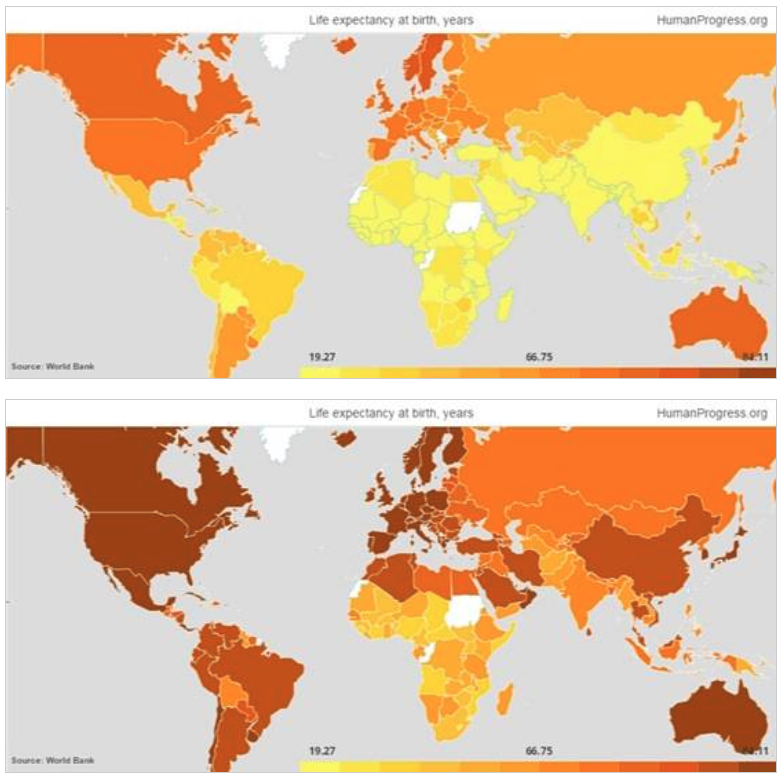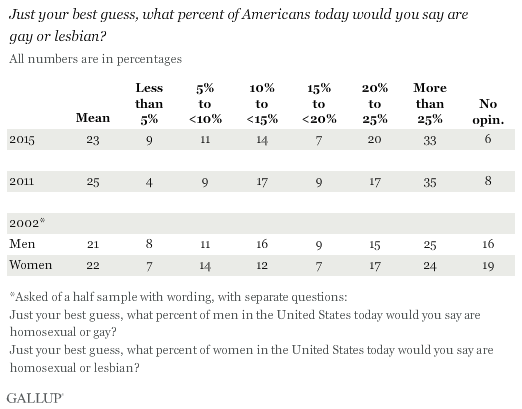Extra Credits
Published on 15 Feb 2018An eye for an eye, a missile for a missile — that’s how the saying goes, right? So thought the Soviet Union and the United States in the early fall of 1962, kicking off a 13-day staring contest that scared the world.
February 17, 2018
Cuban Missile Crisis – I: The Failed Checkmate – Extra History
The great enrichening of 1960-2016
Marian Tupy explains why all the Malthusian worry about overpopulation in the Third World was wrong:
Many people believe that global population growth leads to greater poverty and more famines, but evidence suggests otherwise. Between 1960 and 2016, the world’s population increased by 145 percent. Over the same time period, real average annual per capita income in the world rose by 183 percent.
Instead of a rise in poverty rates, the world saw the greatest poverty reduction in human history. In 1981, the World Bank estimated, 42.2 percent of humanity lived on less than $1.90 per person per day (adjusted for purchasing power). In 2013, that figure stood at 10.7 percent. That’s a reduction of 75 percent. According to the Bank’s more recent estimates, absolute poverty fell to less than 10 percent in 2015.
Rising incomes helped lower the infant mortality rate from 64.8 per 1,000 live births in 1990 to 30.5 in 2016. That’s a 53 percent reduction. Over the same time period, the mortality rate for children under five years of age declined from 93.4 per 1,000 to 40.8. That’s a reduction of 56 percent. The number of maternal deaths declined from 532,000 in 1990 to 303,000 in 2015 — a 43 percent decrease.
Famine has all but disappeared outside of war zones. In 1961, food supply in 54 out of 183 countries was less than 2,000 calories per person per day. That was true of only two countries in 2013. In 1960, average life expectancy in the world was 52.6 years. In 2015, it was 71.9 years — a 37 percent increase.
In 1960, American workers worked, on average, 1,930 hours per year. In 2017, they worked 1,758 hours per year — a reduction of 9 percent. The data for the world are patchy. That said, a personal calculation based on the available data for 31 rich and middle-income countries suggests a 14 percent decline in hours worked per worker per year.
And because everyone loves pictures, here’s one from an earlier article by the same author showing increases in life expectancy between 1960 (top) and 2015 (bottom):
How to Correct New Saws | Paul Sellers
Paul Sellers
Published on 16 Feb 2018What do you have to do to a saw you’ve just bought to get it ready for work? Paul takes a few minutes to show what it takes to get as saw cutting beautifully.
For more information on these topics, see https://paulsellers.com or https://woodworkingmasterclasses.com
Only 3.8% of American adults identify themselves as LGBT
Most people guess a much higher percentage, and if the poll was restricted to the under-30s, the number would likely be at least twice as high. The poll is a few years old now, but it points out that most Americans over-estimate the number of gays and lesbians in the population:
The American public estimates on average that 23% of Americans are gay or lesbian, little changed from Americans’ 25% estimate in 2011, and only slightly higher than separate 2002 estimates of the gay and lesbian population. These estimates are many times higher than the 3.8% of the adult population who identified themselves as lesbian, gay, bisexual or transgender in Gallup Daily tracking in the first four months of this year.
The stability of these estimates over time contrasts with the major shifts in Americans’ attitudes about the morality and legality of gay and lesbian relations in the past two decades. Whereas 38% of Americans said gay and lesbian relations were morally acceptable in 2002, that number has risen to 63% today. And while 35% of Americans favored legalized same-sex marriage in 1999, 60% favor it today.
The U.S. Census Bureau documents the number of individuals living in same-sex households but has not historically identified individuals as gay or lesbian per se. Several other surveys, governmental and non-governmental, have over the years measured sexual orientation, but the largest such study by far has been the Gallup Daily tracking measure instituted in June 2012. In this ongoing study, respondents are asked “Do you, personally, identify as lesbian, gay, bisexual or transgender?” with 3.8% being the most recent result, obtained from more than 58,000 interviews conducted in the first four months of this year.
H/T to Gari Garion for the link.
How a Concubine became the Empress of China – Wu Zetian l HISTORY OF CHINA
IT’S HISTORY
Published on 5 Aug 2015Wu Zetian was the first and only Empress of China. Skillfully, she worked her way up, entering the imperial court of Emperor Tang Taizong as a concubine. After his death she would marry his son, Emperor Kaozong. Later she would ruthlessly dethrone two of her own sons and take power herself, effectively introducing an interregnum to the Tang dynasty. During her very own Zhou dynasty she was known as a kind and fair ruler and made Buddhism state religion. Learn all about the Biography of one of the most popular and at the same time merciless women in Chinese history in today’s episode of IT’S HISTORY.
QotD: Modern forms of argument
I’m not sure whether this is an example of Argumentum ad anus extractus, which is the logical fallacy of pulling stuff out of your ass, or Argumentum ad feces fabricatum, which is argument by making shit up.
Tamara Keel, “News to me”, View From The Porch, 2016-06-13.





